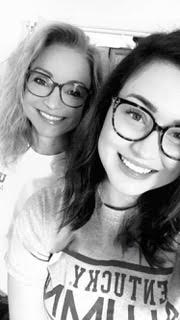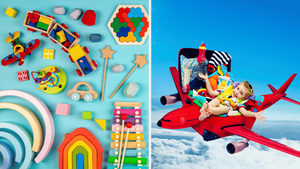Are you a new parent struggling to get your colic baby to sleep? We've got you covered with our list of the best sleeping positions for colic babies. Get some much-needed rest and peace of mind with our guide!
The Surprising Causes of Colic in Babies: Unraveling the Mystery
Colic in babies has puzzled parents and medical professionals for decades. It's a term used to describe excessive crying in an otherwise healthy infant, and it can be incredibly distressing for both the baby and their caregivers. But what causes colic, and is there anything that can be done to prevent or treat it? In this article, we'll explore the latest research findings on the causes of colic in babies and offer some helpful tips for dealing with this challenging condition.
What is Colic, and How Common is it?
Colic is defined as excessive crying in otherwise healthy infants, typically beginning around two weeks of age and lasting until about three to four months. A baby with colic may cry for more than three hours a day, three days a week, for three weeks or longer. Colic affects up to 25% of infants worldwide, causing significant distress for both babies and their parents.
The Mysterious Causes of Colic
The Mystery of Colic
Colic is defined as excessive crying for at least three hours a day, three days a week, for three weeks or more in infants younger than three months old. A crying baby can swallow a significant amount of air, leading to gas and bloating which can worsen their crying. However, the exact cause of colic remains elusive. Researchers have explored various factors that could contribute to colic, such as gastrointestinal issues, allergies, and even maternal stress during pregnancy. Let's explore some of the most surprising causes of colic in babies:
1. Infant Gut Microbiome Imbalance
Recent studies suggest that an imbalance in the gut microbiome, the community of microorganisms living in our intestines, may play a role in colic. Researchers found that colicky babies have a higher number of gas-producing bacteria and fewer beneficial bacteria, leading to increased inflammation and pain. Probiotics, which contain live bacteria, have been shown to help restore balance to the gut microbiome and reduce colic symptoms in some infants.
2. Maternal Diet and Allergens
Some experts believe that certain components in a breastfeeding mother's diet may contribute to colic. Cow's milk protein, found in dairy products, is a common culprit, as well as other allergens like soy, wheat, and eggs. Eliminating these foods from the mother's diet may help alleviate colic symptoms in some cases.
3. Parental Stress and Anxiety
Babies are highly sensitive to their environment, and parental stress and anxiety can have a significant impact on their well-being. A study published in the journal Pediatrics found that mothers who reported higher levels of stress and anxiety during pregnancy were more likely to have infants with colic. Reducing stress and practicing self-care can not only help parents cope with colic but may also improve their baby's symptoms.
4. Infant Temperament
Some researchers believe that colic may be related to an infant's temperament or personality. Babies with colic may be more sensitive to stimuli, such as light, noise, or changes in routine, and may have a harder time self-soothing. While this is not something that can be changed, understanding your baby's unique temperament can help you better support them through this challenging phase.
Strategies for Managing Colic
While there is no one-size-fits-all solution for colic, there are several strategies that may help your colic baby sleep:
- Try different soothing techniques, such as swaddling, rocking, or using white noise.
- Offer a pacifier to help with self-soothing. Sometimes a pacifier can calm your colicky baby.
- If breastfeeding, consider eliminating potential allergens from your diet.
- Experiment with different feeding positions and burp your baby frequently to reduce gas.
- Talk to your pediatrician about the possible benefits of probiotics.
Research-Based Tips For Best Sleeping Position For Colic Baby
1. The Elevated Position
One popular recommendation for colic babies is to elevate their head and upper body during sleep. This position can help reduce acid reflux, which is thought to be a contributing factor to colic symptoms in some infants. To safely elevate your baby, place a firm pillow or foam wedge under the crib mattress, ensuring that it's securely in place and doesn't pose a suffocation risk.
2. The Left-side Position
Research suggests that placing your baby on their left side can help promote digestion and reduce gas build-up, potentially easing colic symptoms. However, it's important to note that the American Academy of Pediatrics (AAP) recommends placing babies on their backs to sleep to reduce the risk of Sudden Infant Death Syndrome (SIDS). If you choose to try the left-side position, make sure to closely monitor your baby and discuss this option with your pediatrician.
3. The Tummy Position (with Supervision)
Tummy sleeping has long been associated with relief for colic babies, as it can help alleviate gas and provide comforting pressure on the baby's abdomen. However, the AAP strongly advises against allowing babies to sleep on their stomachs due to the increased risk of Sudden Infant Death Syndrome - SIDS. If you want to try this position, only do so when your baby is awake and under your direct supervision, such as during tummy time or while holding them on your chest.
4. Swaddling
Swaddling has been shown to help soothe colicky babies by providing a secure, womb-like environment that can help them feel more comfortable and sleep better. Make sure to swaddle your baby safely, with their arms at their sides and the blanket snug but not too tight. Always place a swaddled baby on their back to sleep, it is particularly helpful in establishing healthy sleep habits.
We've read thousands of reviews from parents who have experienced colic with their babies and compiled the top sleeping positions that are proven to help reduce symptoms. Now you can easily find and use the perfect position for your baby's comfort without having to guess or experiment.
Say goodbye to sleepless nights and hello to peaceful rest. Check out our reviews today and start getting a better night's sleep - both for you and your baby!
Below are products that our research showed helped parents on their journey to solve their baby's colic symptoms.

ECO Baby Colic and Gas Relief - ReHEATIE Heated Tummy Toy
For Newborns' Belly Relief by Soothing Warmth, Baby Heating Pad Relief & Soothe Gas, Colic, and Upset Stomach for Fussy Infants
ECO Baby Colic and Gas Relief - ReHEATIE Heated Tummy Toy
Why We Love It
Say goodbye to colic and gas pain in newborns with ECO Baby Colic and Gas Relief - ReHEATIE Heated Tummy Toy! This cute and cuddly toy is designed to bring almost instant, safe relief from stomach discomfort including colic, gas, constipation, and acid reflux in babies. Made of natural and hypoallergenic materials, this toy has been tested and recommended by pediatricians and breastfeeding consultants. Plus, it's a three-in-one toy, as it helps the baby develop fine motor skills while producing a cheerful rattle.
What You Should Know
Our baby warmer retains heat for a long time, reducing gas, helping relieve colic, and soothing the baby's pain. It's external - no need for medication or drops - and the heating pad remains warm for up to 30 minutes, making colic treatment safe and effective. Plus, it's perfect for restless babies with colic, gas, and stomach pain and it helps promote early development of speech centers, attention span, and spatial and logical thinking.

Garden of Life Baby Organic Gripe Water
For Infants & Babies with Nighttime or Daytime Colic, Gas & Stomach Discomfort, Herbal Remedy for Newborn Baby With Chamomile, Lemon Balm & Ginger - 4 fl oz Liquid
Garden of Life Baby Organic Gripe Water
Why We Love It
Garden of Life Baby Organic Gripe Water is the perfect remedy for infant and baby nighttime or daytime colic. Our vegan gripe water for newborns and infants is made with organic chamomile, fennel, lemon balm, and ginger extracts to soothe baby's tummy, without any harsh ingredients. Unlike gripe water gel or other baby formulas, this gentle liquid gripe water for baby's colic, gas, and stomach discomfort provides gentle support—with no sugar, syrups, alcohol, or sodium bicarbonate. Plus, our formula is made using only safe, Organic ingredients and is proudly Third-Party Certified Organic, Non-GMO, Gluten Free, Vegan & Kosher.
What Else Should People Know
Our gripe water for newborns and infants comes with a BPA-free syringe and provides approximately 24 total (5 mL) servings. The dosage for our Gripe Water newborn liquid formula is 2.5 mL to 10 mL depending on the baby's age.

Hatch Rest Baby Sound Machine
Night Light | 2nd Gen | Sleep Trainer, Time-to-Rise Alarm Clock, White Noise Soother, Music & Stories for Nursery, Toddler & Kids Bedroom (Wi-Fi)
Hatch Rest Baby Sound Machine
Night Light | 2nd Gen | Sleep Trainer, Time-to-Rise Alarm Clock, White Noise Soother, Music & Stories for Nursery, Toddler & Kids Bedroom (Wi-Fi)
Why We Love It
The Hatch Rest Baby Sound Machine is the perfect way to give your baby a peaceful and restful night's sleep. It has a library of soothing sounds like white noise, ocean, wind, fan, heartbeat, rain, and lullabies, as well as a dimmable clock and night light that you can control via the app. Plus, with the optional Hatch Sleep Membership, you can get access to bedtime stories and classic music tunes.
What You Should Know
The Hatch Rest Baby Sound Machine is specifically designed to help soothe colic in babies and provide them with the peaceful and restful sleep they need. It comes with an easy-access button on the device to control the volume and nightlight, and you can adjust settings and set timers remotely through your smartphone. Plus, with the dimmable clock and night light, you can make the dark less scary in your child’s room.

The Hug Sleep Sack - Weighted Swaddle with No Weight On The Chest
Assists with Colic Relief for Newborns and Colic Calm - Easy to Use Weighted Sleep Sack Baby 0-6 Months
The Hug Sleep Sack - Weighted Swaddle with No Weight On The Chest
Why We Love It
The Hug Sleep Sack is a must-have for any newborn, providing safety, comfort, and colic relief. Designed in response to the American Academy of Pediatrics' recommendation of weighted sleep sacks and swaddles, this sleep sack has no weight on the chest for the smaller and faster breaths babies often take. The Hug Sleep Sack’s easy-to-use and slightly stretchy swaddle wings are designed to help prevent startle reflexes and promote longer sleep, while its soft touch velcro keeps fastening as the baby grows. Plus, the lovely baby goat shoppe patterns will calm and promote relaxation and deep sleep.
What You Should Know
This sleep sack is the perfect solution for parents looking for a safe and comfortable sleep solution for their baby. The hug sleep sack is ideal for colic relief, soothing newborns, and promoting sleep. Its soft-touch velcro is gentle on baby's skin, while its two-in-one feature allows for an easy-to-use baby swaddle from newborn to six months. Plus, its lovely designs will provide your little one with a peaceful and restful sleep.

Baby Colic and Gas Relief - Heigoeost Heated Tummy Wrap for Newborns
Belly Relief by Soothing Warmth, Baby Heating Pad Swaddling Belt Relief & Soothe Gas, Colic and Upset Stomach for Fussy Babies
Baby Colic and Gas Relief - Heigoeost Heated Tummy Wrap for Newborns
Why We Love It
Heigoeost Heated Tummy Wrap for Newborns offers a traditional way to relieve colic, gas, upset stomachs, and constipation. It provides gentle warmth and comfortable swaddling to calm your baby's colic and soothe your fussy baby. Its exterior fabric is made of thick nylon fabric and filled with non-toxic medical gel, making it a safe physical therapy alternative to baby medication and gas drops. Plus, its super soft plush fabric is adjustable to fit the waist size of 0-3 year-olds from 15.5 to 22in waist circumference.
What You Should Know
Heigoeost Heated Tummy Wrap for Newborns is the perfect way to provide relief for colic and gas for your little one. To reach the proper temperature, you can microwave the gel pack for 15 seconds or place it in hot water at 140-160 degrees F for a few minutes. It's an easy-to-use, safe, and comfortable baby heating pad for swaddling that can be used for newborns to toddlers.
Are you struggling to find the best sleeping position for your colic baby? It can be tough to figure out what works best for your little one, especially when it comes to something as important as sleep.
We understand how difficult it can be to find the right sleeping position for your colic baby, so we've put together a list of the most frequently asked questions about the best sleeping positions for colic babies. With this information, you'll be able to make an informed decision about what will work best for your baby.
FAQs For Best Sleeping Position For Colic Baby
Do colic babies fart a lot?
Yes, colic babies often experience excessive gas and burping. This is because their digestive system is still developing, so they are more prone to gas buildup. The best way to reduce gas in your colic baby is by keeping them upright during feedings, burping frequently, and trying different soothing techniques such as swaddling or rocking.
Is tummy sleeping safe for colic babies?
Tummy sleeping has long been associated with relief for colic babies, as it can help alleviate gas and provide comforting pressure on the baby's abdomen. However, the American Academy of Pediatrics (AAP) recommends placing babies on their backs to sleep to reduce the risk of Sudden Infant Death Syndrome - SIDS. If you choose to try the tummy position, make sure to closely monitor your baby and discuss this option with your pediatrician.
Can swaddling help colic babies?
Swaddling has been shown to help soothe colicky babies by providing a secure, womb-like environment that can help them feel more comfortable and sleep better. Make sure to swaddle your baby safely, with their arms at their sides and the blanket snug but not too tight. Always place a swaddled baby on their back to sleep, as this is particularly helpful in establishing healthy sleep habits.
Are there different sleep positions that help calm a colic baby?
Yes, several sleep positions can help calm a colic baby. These include elevating the head and upper body during sleep to reduce acid reflux, placing your baby on the left side to promote digestion and reduce gas build-up, tummy sleeping (under supervision), and swaddling. Each of these techniques has proven helpful for colic babies, but it's important to discuss these options with your pediatrician before trying them.
What should I do if my baby has colic?
Colic can be a difficult and stressful experience for both parents and babies alike. The best way to manage symptoms is to practice soothing techniques such as swaddling, rocking, and offering a pacifier. Additionally, you may want to try different sleeping positions to help your baby feel more comfortable. If these techniques don't seem to be working, it's best to consult your pediatrician for additional advice.
Wrapping It Up
Remember colic is severe, often fluctuating pain in the abdomen of newborn babies, typically characterized by excessive crying. This condition makes for a fussy baby, and they have difficulty sleeping. A colic baby has been described as a gassy baby which makes them have trouble settling down for sleep. Sleep habits and positions, such as placing the baby on their back to sleep, can support better rest for the infant.
To help alleviate colic symptoms, it's essential to hold the baby upright after meals and gently burp them to release any trapped gas. Parents can also make adjustments in feeding practices, soothing techniques, and lifestyle changes to further support their baby's comfort. For example, offering smaller, more frequent feedings, using a pacifier, or using white noise when your baby sleeps. Also, implementing calming activities like gentle rocking or swaddling may help.
It's important to remember that while colic can be distressing for both baby and parents, the condition typically begins to improve around three months of age and almost always resolves by six months. Patience, understanding, and consistent efforts to soothe and care for the baby will go a long way in managing colic symptoms.
Thank you for reading and hope you found it helpful!









